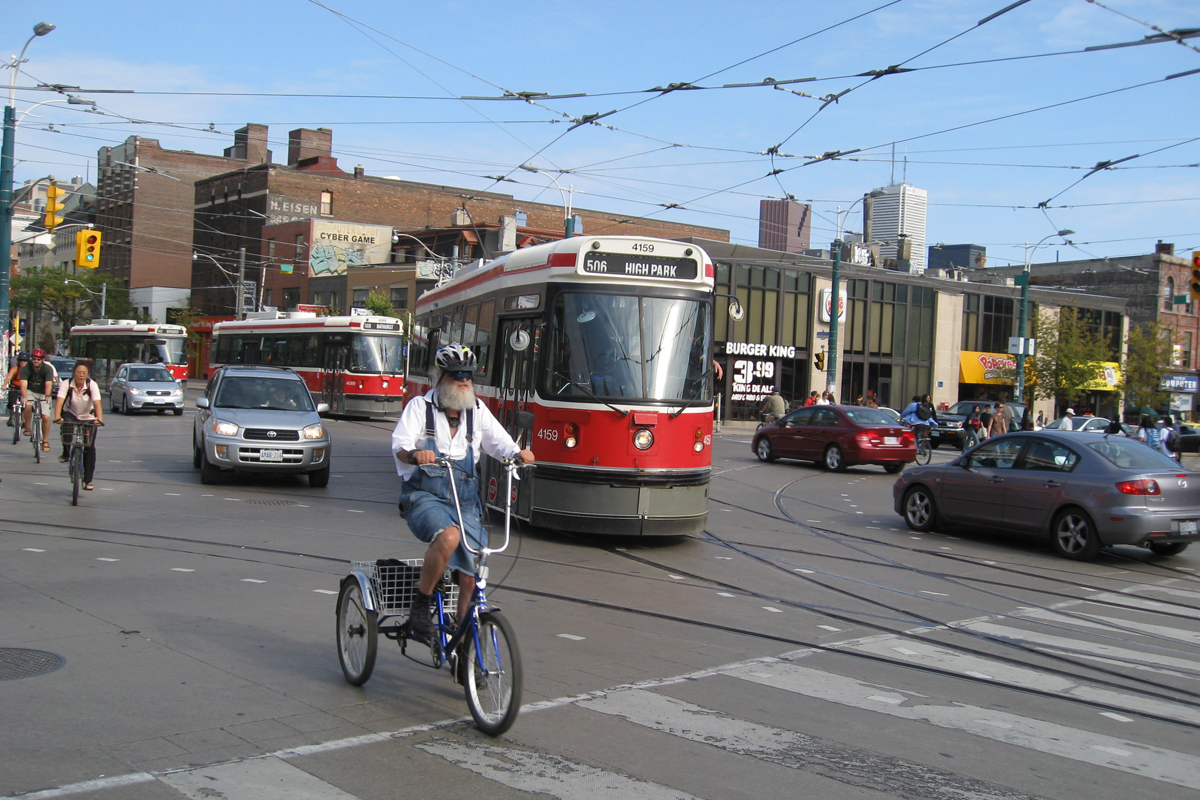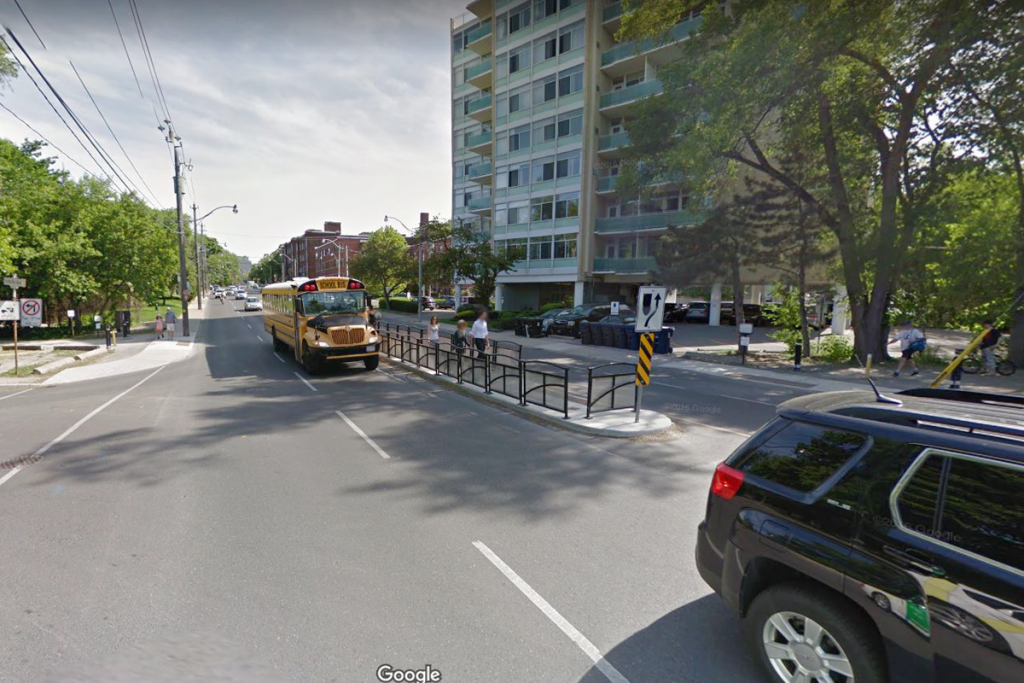
23 Oct Raging About Roads: Volume 1
Fair warning: this is going to be a rant.
I was biking up to my father’s for brunch one weekend morning earlier this summer. I was feeling pretty good about myself for making it up a steep hill without needing to get off and walk my bike (#smallvictories) when I saw something that set my teeth on edge. It got me foaming at the mouth, my blood boiling. I was fit to be tied, ready to fly off the handle and go off the deep end. Every fuse and gasket was blown. What set me off was this:

Not all that dramatic, I know. You might be wondering what in this image could possibly offend. If you live in cities like London or Prague, pedestrian island connections are a dime a dozen. If you live in cities like mine, Toronto, where they are much rarer, you might be thinking we need more streets with pedestrian-friendly infrastructure like this. And I agree, we absolutely do. I love pedestrian islands, though this one could use some pavement markings on the road to indicate to cars that pedestrians cross here. No, it’s not the island that got me steamed. It’s the barriers and railings surrounding the island that really got my goat.
If you’re familiar with 8 80 Cities, then you most likely know our position that streets are not nearly safe enough for vulnerable road users. Too many city streets prioritize the needs of motorists over the needs of pedestrians, cyclists, and public transit. The focus sadly tends to be about moving as many private automobiles as possible, as fast as possible. We advocate for roadways that are designed for all users, all ages, and all abilities. We support efforts to reduce speed limits and encourage cities to adopt traffic calming measures that save lives. The conversations we have with elected officials, transportation engineers, local businesses and community members around these issues are never easy. Change is hard. For seventy years cities had one idea of what roads were supposed to do, who they were supposed to be for. For decades, we trained everyone to think only of the car. It’s no wonder we face opposition and struggle to get cities to acknowledge there even is a problem with our streets to begin with!
Which brings me back to my bike ride, the pedestrian island, and the barriers and railings. The island was installed a few years ago, which tells me the city recognized the street was unsafe. So far, so good. They saw that a major recreational pathway, the Beltline Trail, used by thousands and thousands of pedestrians and cyclists, intersects this street and they correctly identified that better infrastructure was needed to protect those road users. Still good. Then, they got worried that a pedestrian island alone would not be enough to secure their safety. After all, cars travel at very high speeds along this street, up to 60km per hour. And it’s here that they erred. Rather than trying to address the core safety concern, i.e. cars moving too quickly through a major recreational trail, the city decided to it was easier to ensconce pedestrians in armour. Instead of pursuing any number of infrastructure improvements that would slow traffic down and greatly reduce the possibility of a vehicle hitting that pedestrian island, the city said ‘Nah, we’re keeping cars moving at dangerous speeds. Let’s put up railings and pen vulnerable road users in instead’. Apparently, that’s safety.
As I mentioned, we often are in situations where we’re fighting for better streets against deeply-held entrenched beliefs. It can be difficult, but it is understandable. We’re trying to change a lifetime of habits. The fight can be frustrating, but it’s one worth having. It’s one I think we’re winning, slowly, yet surely. What pissed me off so much about those barriers and railings is that this was not a case where the city was unaware of a safety issue. This was a situation where the city knew a street was unsafe for children, for the elderly, for cyclists and pedestrians. They knew changes had to be made. And they chickened out. They refused to address the real cause of danger, allowed cars to continue to travel at unsafe speeds, and gave everyone else some iron bars as protection. It’s akin to owning a building that’s a fire hazard and instead of upgrading the building, you give tenants fireproof vests. Every time our cities ignore the real issue by putting up railings next to sidewalks or installing signs asking drivers to slow down or reducing speed limits without changing the infrastructure of our roads, they’re handing out fireproof vests. They see a problem and refuse to take the more politically challenging path and properly address it. I can understand ignoring an issue you don’t recognize as a problem. But seeing a problem, accepting there are serious safety concerns, and then doing nothing to address the root causes of those concerns? That’s unconscionable.



